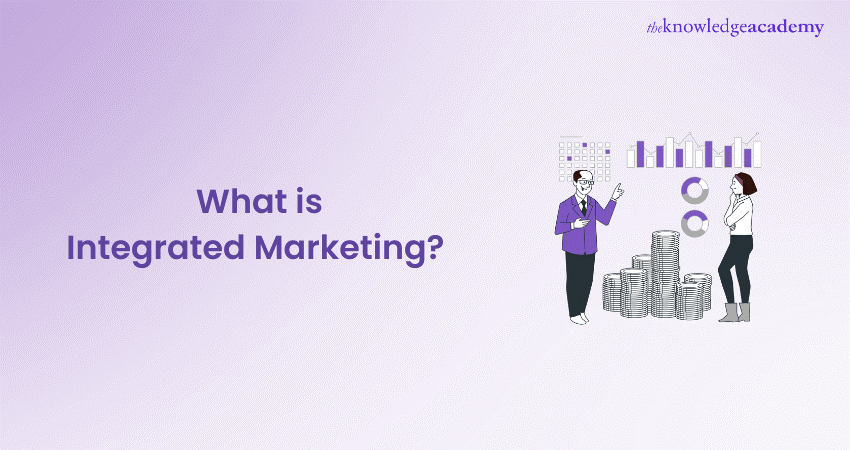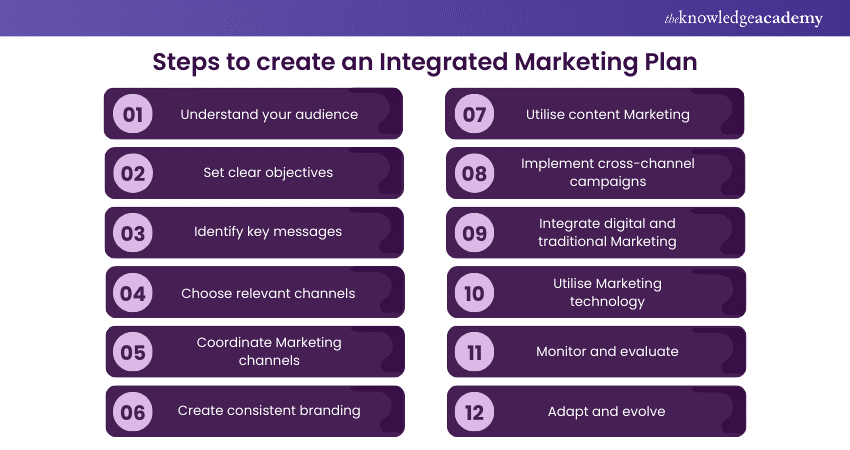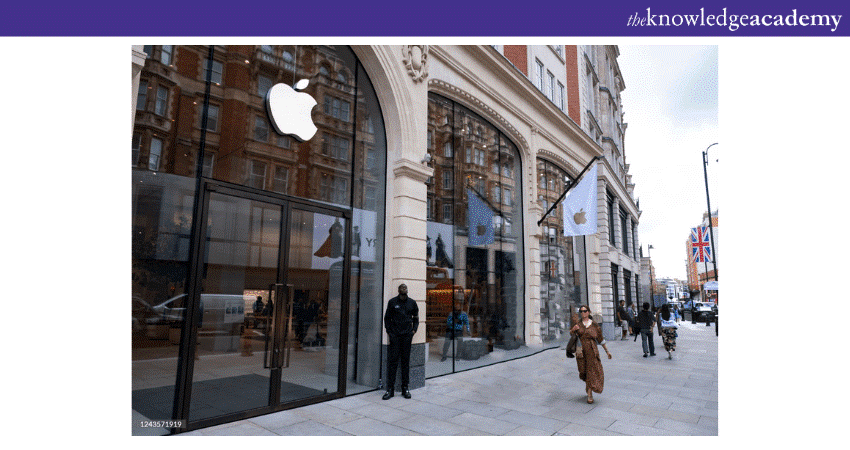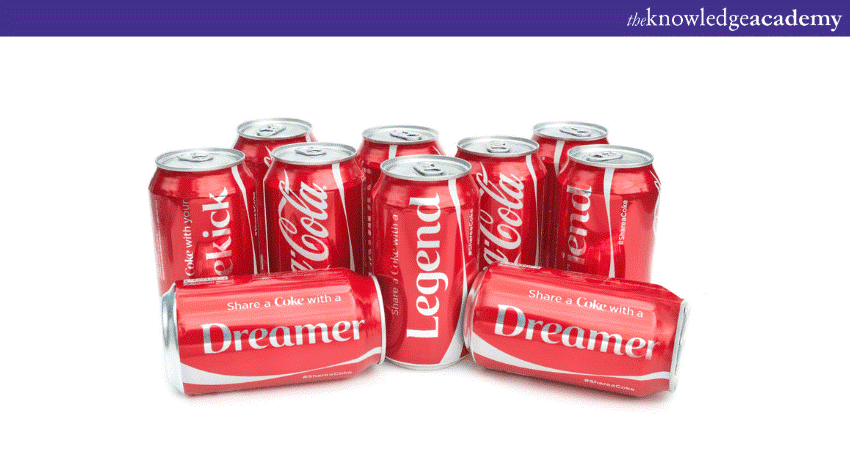We may not have the course you’re looking for. If you enquire or give us a call on 01344203999 and speak to our training experts, we may still be able to help with your training requirements.
We ensure quality, budget-alignment, and timely delivery by our expert instructors.

Brands create memorable impressions when you discover them on social media platforms and through email promotions or outdoor displays. What is Integrated Marketing? It’s the strategy behind a brand’s seamless presence across multiple platforms, ensuring consistent messaging that feels coordinated rather than fragmented. The core of Integrated Marketing lies in creating a unified brand experience.
While using your phone, you view an advertisement followed by an email connection, which appears as a seamless continuation of your browsing experience. That’s Integrated Marketing in action! By keeping content simple, engaging, and familiar across all channels, brands strengthen their impact. This blog explores what is integrated marketing and its power to enhance brand effectiveness.
Table of Contents
1) Understanding What is Integrated Marketing
2) Importance of Integrated Marketing
3) How to Create an Integrated Marketing Plan?
4) Examples of Successful Integrated Marketing
5) Conclusion
Understanding What is Integrated Marketing
Integrated Marketing is a strategy that ensures a consistent message across all marketing channels, aligning brand communications at every customer touchpoint. This approach, also known as Integrated Marketing Communications (IMC), focuses on customer needs rather than sales goals.
By combining various media forms - such as TV ads, digital content, and print articles—Integrated Marketing enhances brand recall, builds trust, and maximises reach. It streamlines analytics and optimises resources, ultimately strengthening brand identity and boosting customer engagement.
Importance of Integrated Marketing
The modern digital environment requires Integrated Marketing to develop both a powerful and memorable brand presence. A business that delivers uniform messaging through all its platforms establishes trust and professionalism, which improves customer engagement. Here are some key points:
a) Creates a Consistent Brand Message: All marketing channels need to present one unified message which strengthens both brand identity and trust.
b) Enhances Brand Recognition: Brand recall reaches higher levels when marketing elements cohere, which enables better customer recognition and connection to the brand.
c) Builds Customer Trust and Loyalty: Consistency across platforms fosters reliability, strengthening customer relationships and loyalty.
d) Improves Marketing Efficiency: Organisations maintain operational efficiency and reduce unnecessary costs through a consolidated approach to marketing that coworkers toward one overall goal.
e) Maximises Return On Investment (ROI): When marketing campaigns align with each other, they produce enhanced performance outcomes while delivering greater investment returns.
f) Strengthens Multi-channel Engagement: Customers benefit from a continuous smooth encounter involving both digital and social media along with print and offline marketing touchpoints.
g) Boosts Conversion Rates: A unified marketing effort produces efficient customer journeys through the sales process and drives both higher conversion rates and revenue growth.
h) Adapts to Changing Market Trends: When brands integrate their marketing efforts, they maintain message consistency across different platforms as they adapt their content swiftly.
Elevate your marketing game and dominate the competition – Join our Strategic Marketing Masterclass now and revolutionise your approach to success!
How to Create an Integrated Marketing Plan?
Developing a successful Integrated Marketing strategy involves carefully planning, coordinating, and aligning various Marketing channels to deliver a consistent and compelling brand message. Here are key steps to create an effective Integrated Marketing strategy:

1) Understand Your Audience: Define your target audience and create detailed buyer personas. Understand the preferences, behaviours, and pain points of your audience.
2) Set Clear Objectives: Clearly define your Marketing objectives: brand awareness, lead generation, sales, or customer retention. Ensure that your objectives align with overall business goals.
3) Identify Key Messages: Develop key messages that resonate with your target audience. Ensure consistency in messages across all Marketing channels.
4) Choose Relevant Channels: Identify the channels most frequented by your target audience. Utilise online and offline channels, such as social media, email, content Marketing, traditional advertising, and events.
5) Coordinate Marketing Channels: Plan how different channels will work together to convey a cohesive message. Ensure an easy transition for customers between channels (e.g., from social media to your website).
6) Create Consistent Branding: Maintain a consistent visual identity, including logos, colours, and typography. Consistent branding builds recognition and trust.
7) Utilise Content Marketing: Develop high-quality, relevant content that aligns with your brand's goal and resonates with your audience. Distribute content across various channels to maximise reach.
8) Implement Cross-channel Campaigns: Plan and execute campaigns that span multiple channels simultaneously. Ensure that each channel reinforces the campaign's core message.
9) Integrate Digital and Traditional Marketing: Combine digital Marketing tactics (e.g., social media, email) with traditional methods (e.g., print, TV) for a comprehensive approach. By leveraging the strengths of both Traditional Marketing and Digital Marketing, businesses can reach different audience segments.
10) Utilise Marketing Technology: Implement Marketing technology tools for data analysis, automation, and tracking. Examine the performance of each channel and adjust strategies based on data insights.
11) Monitor and Evaluate: Regularly monitor the performance of your Integrated Marketing efforts. Use analytics to evaluate the impact of each channel and adjust your strategy accordingly.
12) Adapt and Evolve: Stay Agile and be ready to adapt your strategy based on changes in the market, consumer behaviour, or emerging trends. Continuously optimise your approach for better results.
Supercharge your Mobile Marketing skills – join our Mobile Marketing Masterclass and propel your campaigns to new heights!
Examples of Successful Integrated Marketing
The following are some examples where Integrated Marketing has been used to run successful Ad campaigns:
Apple's In-store Experience
Apple exemplifies brand integration through its in-store experience, contributing to its global brand recognition and loyalty. Here's how it does that:

Apple exemplifies brand integration through its in-store experience, contributing to its global brand recognition and loyalty. Here's how it does that:
a) Consistent Branding: Apple ensures a consistent look and feel across products, advertisements, and physical stores, creating a seamless brand experience.
b) Identifiable Stores: Apple stores are designed with the same aesthetic as their products and website, making them immediately recognisable and reinforcing brand identity.
c) User Experience: The in-store experience mirrors Apple's commitment to simplicity and innovation, aligning with the brand narrative.
d) Brand Loyalty: Apple's integrated approach fosters customer identification and loyalty by delivering a cohesive brand experience throughout the customer journey.
Coca-Cola's 2014 "Share a Coke" Campaign
Coca-Cola's 2014 "Share a Coke" campaign is a prime example of successful Integrated Marketing. The campaign strategically leveraged various channels to create a cohesive and engaging experience. Coca-Cola replaced its traditional logo on 20-ounce bottles with 250 popular names, encouraging consumers to find and share bottles with their names or friends. Here's how it achieved success:

a) Product Design: The bottles became central to the Marketing strategy, transforming them into personalised, shareable items.
b) Social media Integration: The hashtag #shareacoke became a viral sensation, prompting consumers to share their personalised Coke bottles on social media platforms.
c) Online Engagement: Consumers actively participated in the campaign by searching for and sharing their personalised bottles, creating a sense of excitement and community.
d) User-generated Content: The campaign generated over 500,000 user-generated pictures with the #shareacoke hashtag, turning consumers into brand ambassadors.
e) Social Media Growth: Coca-Cola gained approximately 25 million new Facebook followers during the campaign, showcasing the impact of the integrated approach.
Conclusion
We hope that after reading this blog, you have now understood What is Integrated Marketing. An Integrated Marketing Campaign helps transform scattered efforts into a harmonious brand symphony. Aligning diverse tactics channels your message cohesively, boosting brand resonance. So, make Integrated Marketing the cornerstone of your brand journey for lasting impact.
Elevate your Marketing capabilities and soar to success with our cutting-edge Marketing Courses – join today!
Frequently Asked Questions
What are the Different Types of Integrated Marketing Channels?

Integrated marketing channels include social media, email, TV, print, online ads, and in-store promotions. These channels work together to create a cohesive and unified brand message across various platforms.
What is the Primary Objective of Integrated Marketing Communications?

Integrated Marketing Communications (IMC) exists to maintain brand messages which are compelling and consistent across all communication channels. Integrating marketing strategies through IMC creates powerful effects that boost brand visibility and establish trust while enhancing customer satisfaction.
What are the Other Resources and Offers Provided by The Knowledge Academy?

The Knowledge Academy takes global learning to new heights, offering over 3,000 online courses across 490+ locations in 190+ countries. This expansive reach ensures accessibility and convenience for learners worldwide.
Alongside our diverse Online Course Catalogue, encompassing 19 major categories, we go the extra mile by providing a plethora of free educational Online Resources like News updates, Blogs, videos, webinars, and interview questions. Tailoring learning experiences further, professionals can maximise value with customisable Course Bundles of TKA.
What is The Knowledge Pass, and How Does it Work?

The Knowledge Academy’s Knowledge Pass, a prepaid voucher, adds another layer of flexibility, allowing course bookings over a 12-month period. Join us on a journey where education knows no bounds.
What are the Related Courses and Blogs Provided by The Knowledge Academy?

The Knowledge Academy offers various Marketing Courses, including the Marketing Budget Course, Content Marketing Course and many more. These courses cater to different skill levels, providing comprehensive insights into Guerrilla Marketing.
Our Digital Marketing Blogs cover a range of topics related to Integrated Marketing, offering valuable resources, best practices, and industry insights. Whether you are a beginner or looking to advance your Marketing skills, The Knowledge Academy's diverse courses and informative blogs have got you covered.
Upcoming Digital Marketing Resources Batches & Dates
Date
 Introduction to Marketing Training
Introduction to Marketing Training
Fri 9th May 2025
Fri 11th Jul 2025
Fri 12th Sep 2025
Fri 14th Nov 2025






 Top Rated Course
Top Rated Course



 If you wish to make any changes to your course, please
If you wish to make any changes to your course, please


